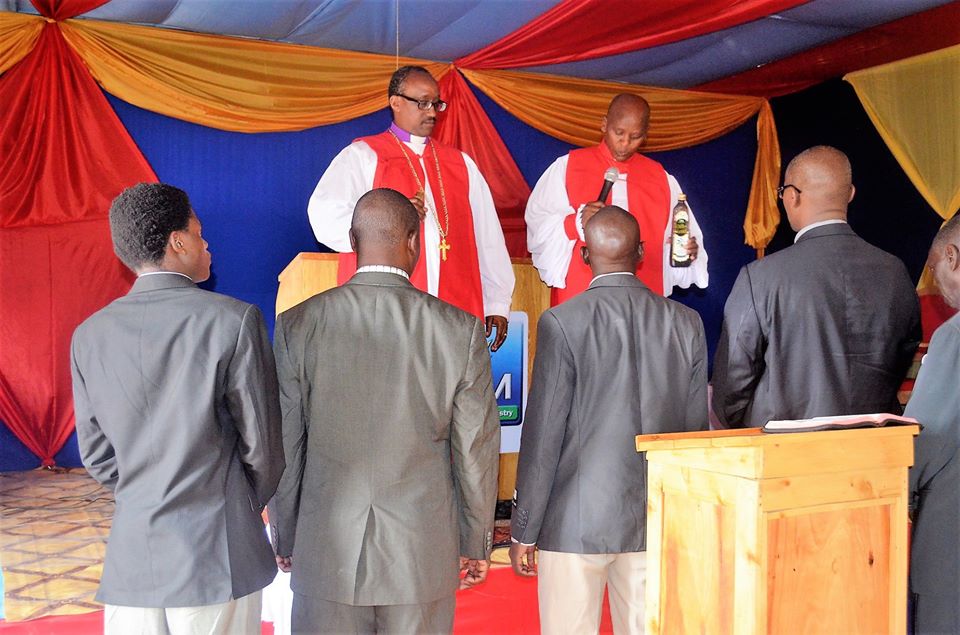How CCOEB candidates of the office of the Bishop are selected and elected.
The bishop is appointed by Holy Spirit. There is no suggestion here of an ontological order of ministry, but it does suggest a functionally hierarchical office. In the apostolic church all believers were being filled with Holy Spirit. There is no qualitative distinction in Spirit baptism between Jew or Gentile, male or female, slave or free. Nor is there a qualitative distinction in Spirit baptism between deacon and bishop. However, being “placed” or “appointed” by Holy Spirit implies a qualitative distinction in terms of ministry leadership.
The question now before us is, “How were bishops appointed by the Holy Spirit?” The answer may be discerned by examining the selection of various leaders in the Acts of the Apostles: the selection of Matthias as apostle; the selection of the seven; the selection of Barnabas and Saul as apostles; and the selection of Judas and Silas to accompany Paul and Barnabas to Antioch (Acts 1:21-26; 6:1-6; 13:1-3; 15:22). The need for leadership is assumed and is prompted by various events in the life of the church.
There are elements common to the leadership selection process in these situations. The church is gathered together in prayer and worship. The leader(s) are chosen from within and affirmed by the gathered church. In each case, the chosen leader(s) had a demonstrated history of faithfulness and charismatic leadership. The chosen leaders possessed certain qualitative distinctions that prompted the gathered church to set them forth in ministry. The gathered church was of “one mind.” There was a consensus – unity – prevalent within the gathered church in the presence of Holy Spirit (Acts 15:22, 28). Finally, in two of these occasions the selection process was confirmed with the sacramental act of the laying on of hands, which could suggest that this was a common practice.
A bishop can be appointed: A person can be appointed to be a bishop by a bishop who has Apostolic Succession; their temporary title is called a "bishop-designate" until formally consecrated through a ceremony. The appointing bishop must have rights to Apostolic Succession. This is the title prior to consecration. The person can only be removed from office by the prelate or if the person abdicates (resigns) the office.
A bishop can be elected: A person can recommended to be a bishop by a group of pastors or elders within the church body. That group must request a Bishop within the College of Bishops to deliberate in order to consecrate that elected leader. The College of Bishops query to find out that person's report is good within and without. The person's temporary title is "bishop-elect" until formally consecrated through a ceremony. The person can only be removed from office by the church leaders who chose the individual or the person can abdicate (resign).
THE OFFICES OF A BISHOP
Chief Prelate: the Chief Prelate is the head of the College of Bishops.
Territory Bishop: Is in charge of a province or group of dioceses.
Diocesan Bishop: A Diocesan Bishop is a bishop who presides over a geographical area. A Diocesan Bishop has complete authority within his jurisdiction, but is subordinate to the Territory.
Suffragan Bishop: A Suffragan Bishop is a bishop who is a subordinate to a Territory Bishop. In the CANADIAN COLLEGE OF EVANGELICAL BISHOPS the Suffragan Bishops are on the staff of the Territory Bishop.
Titular Bishop: A Titular Bishop is a bishop without a diocese. Rather, the bishop is head of a titular province, which is usually the extension of the Chief Prelate Office.
Auxiliary Bishop: An Auxiliary Bishop is a full-time assistant to a Diocesan Bishop.
Coadjutor Bishop: A Coadjutor Bishop is an Auxiliary Bishop who is given almost equal authority in a diocese with the Diocesan Bishop, and the automatic right to succeed the incumbent Diocesan Bishop. The appointment of Coadjutor Bishops is often seen as a means of providing for continuity of church leadership.
Honorary Assistant Bishop, Assisting Bishop, or Bishop Emeritus: An Honorary Bishop is appointed by the Chief Prelate for the purpose of assisting with the work of the College of Bishops.This is the order of the process
1. Appointment or Election Letter
a. Appointment Letter to College of Bishops for appointment
b. Election Letter to College of Bishops for vote of acceptance
i. Letter of determination to candidate from College of Bishops
ii. Letter of Appointment to candidate from Archbishop/Chief Prelate
2. Initial Letter of Intent
3. Submission of Coat of Arms to College of Bishops for approval
4. Submission of a head shot photo in appropriate Bishops' attire.
5. Submission of Paper for consideration
a. Bishop Elect
i. Why does your church body submit you to the CCOEB for Consecration?
ii. Why do you want to be a bishop?
iii. Are you called to be a bishop?
b. Bishop Designate
i. Why do you want to be a bishop?
ii. Are you called to be a bishop?
6. Certificate Issued -"Intent to Consecrate"
7. Application completed - Honorary Degree in Theology with Consecration in Divinity (ONLY those who qualify)
8. Time and date of Consecration Service set
a. Private Service
b. Group Service
c. Individual Service (No Guests)
9. Certificate of Consecration ordered
10. Honorary Degree ordered (where applicable)
11. Certificate of Apostolic Succession ordered
12. Bishop's Consecration Service
1. The order of ascension
a. Titular Bishop – Bishop without a dioceses.
b. Suffragan Bishop and/or Diocesan Bishop – Subordinate to the Regional Bishop
c. Archbishop/Chief Prelate
d. The offices of the Chief Prelate are elected upon the death of the current seated Prelate.

- Teacher: Bishop Dr. Joseph T. Dore
- Teacher: Bishop Leolene Harris
- Teacher: Archbishop William Kimando
- Teacher: Bishop Kimani Ndung'u
- Teacher: Bishop Dr. Joseph Wilberforce